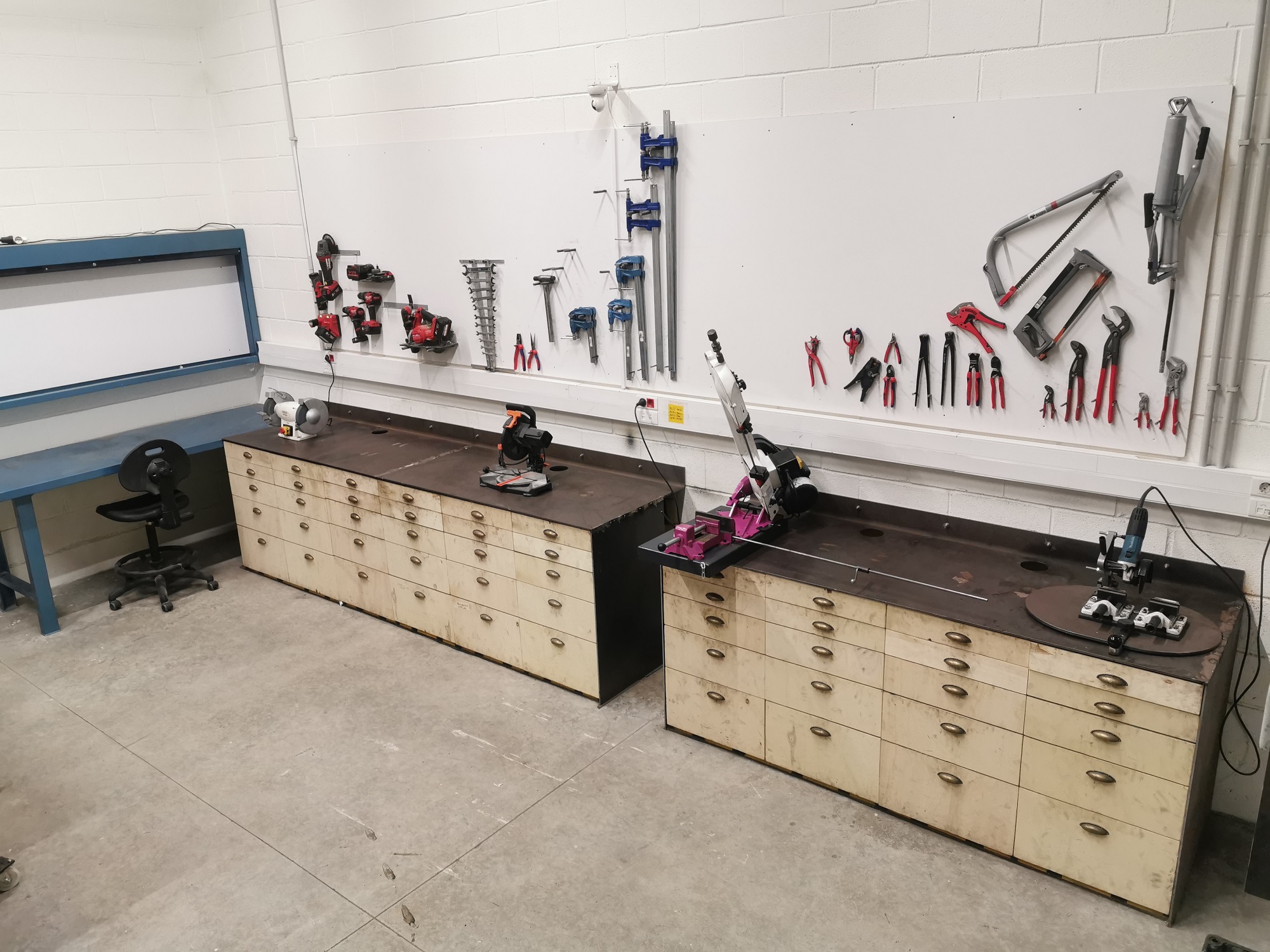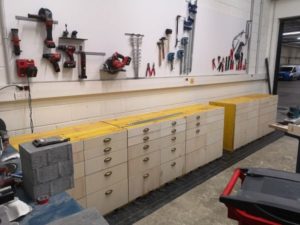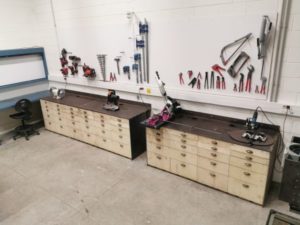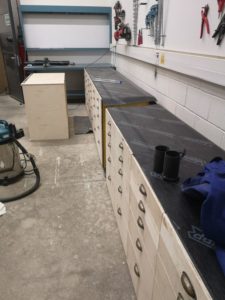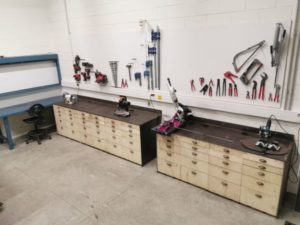Storage drawer for tools and different materials located in the Medialab FabLab.
The objective of the project was a storage system for tools and consumables. A closed system where the entering of dust and dirt is avoided, resistant to wear and tear, if not industrial, at least semi-professional.
Step by step
- Tableros de contrachapado de abedul o chopo 5 paneles de 1220x2220x12 mm
- Tableros de contrachapado de abedul o chopo 5 paneles de 1220x2220x 20 mm
- Dos paneles 1220x2220x30 mm
- 20 tableros tricapa de encofrar 500×2000 mm.
- 50 tiradores para cajones, 200 tornillos europeos largos 10 mm, 1000 tirafondos de 3×25, 3×30, 4x50mm , 2 rollos tela asfáltica 1000 x 15000 mm, 50 juegos de guías telescópicas de salida total 500 mm con freno. electrodos de soldar 3,20 mm rutillo E6013.
- Tratamiento incoloro para madera PLASTOR T1 mono mate. lijas para lijadora roto orbital grano180-250-400.
- Cola blanca.
- tirafondos spax 4×70 wirox T20
- tubo negro pvc flexible 4/7
- CNC milling machine
- Screwdriver
- Hammer drill
- Orbital sander
- Spraygun
- Nailgun
- Compressor
- MMA welding machine
- Hammer
The objective of the project was a storage system for tools and consumables. A closed system where the entering of dust and dirt is avoided, resistant to wear and tear, if not industrial, at least semi-professional.
The first thing that was done was to analyze the problems, starting by answering the following questions: Why does the workspace remain messy at the end of the day? Why is it common to find tools and consumables damaged and lying on the ground?
One possible answer was that there was no system to store the tools in a comfortable and orderly way. It could also be due to the way users act, due to the lack of a collective awareness of the space and the importance of taking care of the tools available to all.
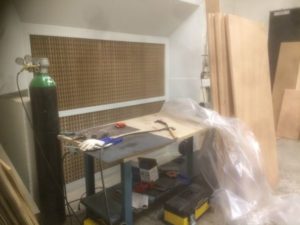
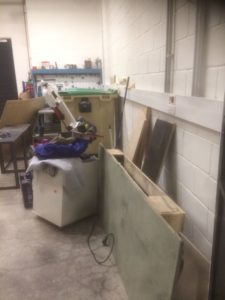
It was decided to create a drawer-type storage system with a capacity for 50 drawers. Each drawer would have telescopic guides with a total extension of 50 cm and be prepared to withstand a maximum weight of 50 kg. The chest of drawers in its entirety would have a length of 5.70 meters, a height of 80 cm and a depth of 76 cm. The chest of drawers, in addition to being designed to store material, would also serve as a work table and hold a band saw for cutting metal, plastic and wood.
When choosing the materials and their construction, a compromise was always sought between robustness, durability, safety, comfort and cost. That is why most of the base structure is made with formwork panels (three-layer board), a cheap material that is very resistant to compression and torsion, easy to find in industrial construction supplies and resistant to humidity. Apart from that, poplar plywood boards were also used to build the drawers.
*Before making the Cad drawings for the breakdown of the structure, the heights of the drawers were calculated based on the average of the most used objects present in the workshop. For this purpose, each chest of drawers was made up of 2 drawer modules. Each of them was made up of 5 drawers of different heights, respectively 5-7.5-12.5-17-30 cm.
*The supporting structure of the chest of drawers is made from three-layer wood panels also known as formwork panels with the characteristic yellow color. The panels measure 500×2000 mm and are 2.8 mm thick. The structure is made up of 7 pieces: 2 sides, a central reinforcement, a base, a surface board and 2 rear covers.
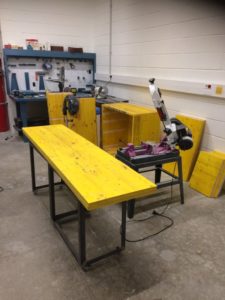
*In the suction table of the milling machine, some anchors were made to always have the same reference when placing the panels to be milled. This way it was possible to work in series, always maintaining the same coordinate zero and saving time.
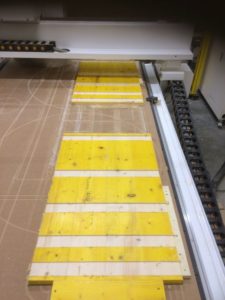

Firstly, the 2 side panels that house the rails were made and therefore have a 2 mm deep recess and all the holes for the European screws that hold the telescopic rails to the wooden structure.
- Full thread
- Thread pitch 1.6 mm
- outer diameter 6.0 mm
- core diameter 4.7 mm
- hole diameter 5 mm
- length 12mm
- Accionamiento: Ranura de estrella PZ2
The central reinforcement has been made in the same way, but differs from the other 2 because it has machining on both sides.

The base piece, like the surface board, has 3 3-mm recesses that serve as a reference when placing the sides and the central piece.
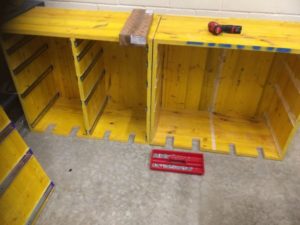
The drawers were also made through a numerical control milling process.
The fronts of the drawers were made from 30 mm poplar plywood, the sides from 12 mm plywood and the bottom from 20 mm plywood.
Later, in the assembly phases, 3.5 x 30 mm spax screws and white glue were used to join the pieces. A brass handle was placed on the front of each drawer.
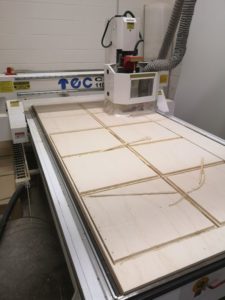
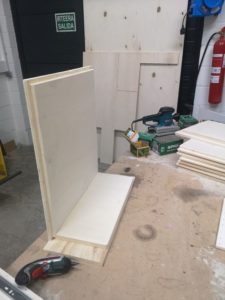
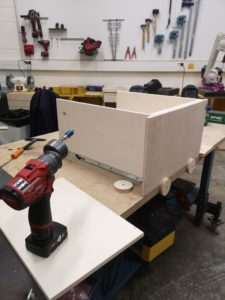
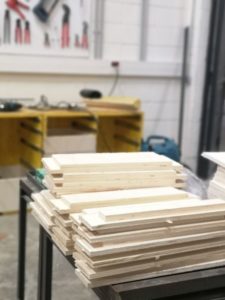
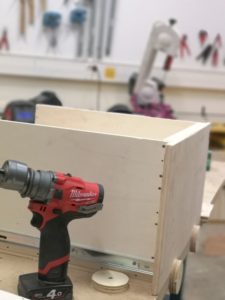
Once all the drawers and their respective guides had been assembled, the base of the chest of drawers was isolated from the ground humidity by 2 layers of 3 mm asphalt cloth. Each drawer module was joined to the next with tuercas pasantes métrica 10 and anchored to the floor using 12 mm expansion plugs.
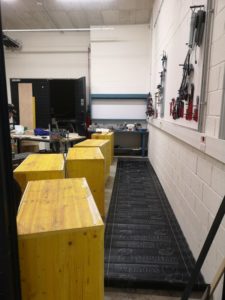
The entire surface of the drawers was blanketed with asphalt cloth and covered with a 10 mm steel plate. The plate was folded and drilled and then attached to the concrete wall at 15 different points using chemical plugs.
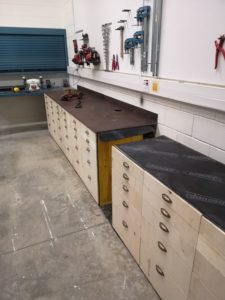
Each union of the steel pieces of the covering plate with the respective vertical reinforcements was made through 3 welding seams with basic E355 electrodes.

